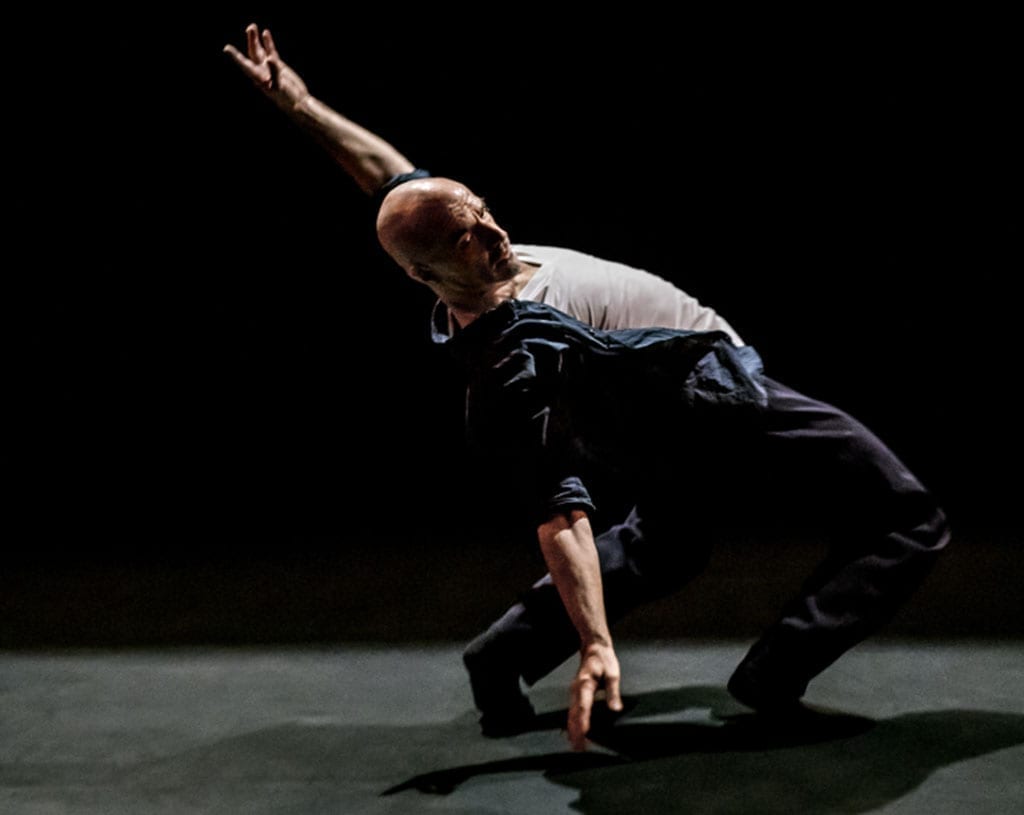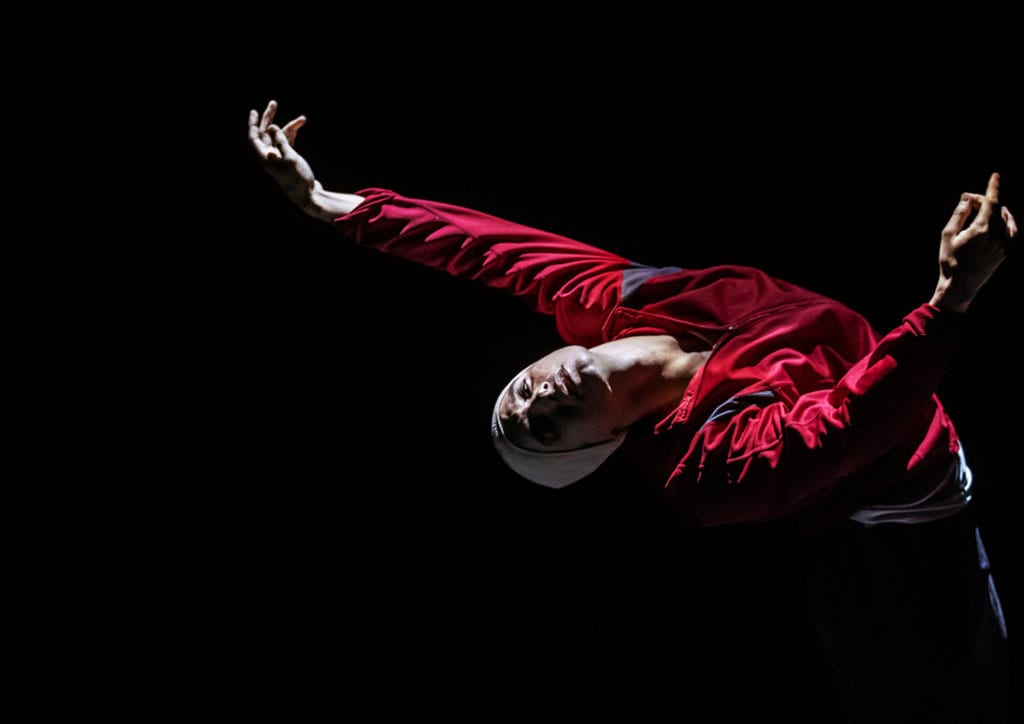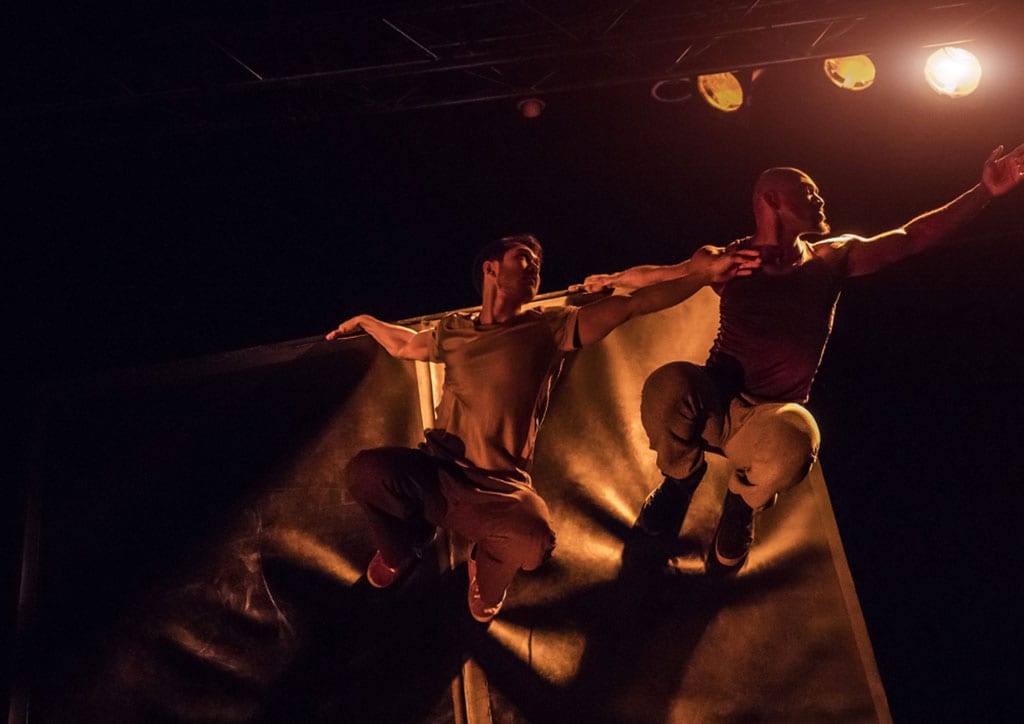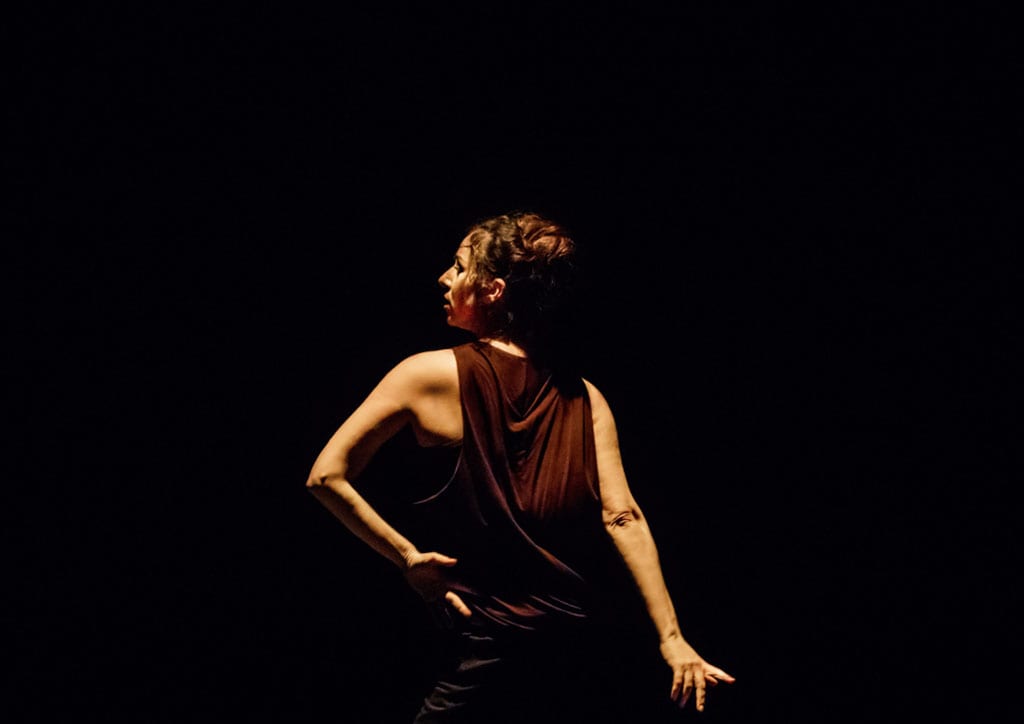Maliphantsworks is an evening of four intimate performances each choreographed by Russell Maliphant, who also performs.
Wall is performed in a small intimate studio, dimly lit and contained, allowing us to focus on the the two performers Dickson Mbi and Tommy Franzen, who present a show of strength and technique. The dancers perform playing on a wall that is fairly high, that at the beginning the audience has to learn to trust the way in which the performers move across the space on raised and tilted platforms. The skill and technique of the performers is almost magical in the way in which they hold a certain amount of control – this ability to hold yourself against gravity and make it look effortless was consistent throughout the piece. The style of performance is influenced by break dancing but is really heightened by the contemporary partner work and the relationship the dancers have with the set. Es Devlin (stage designer for Wall) is known for her visual aesthetic that tells the story from the inside out, the set design is a sculpture that not only acts as a design enhancement choice but contributes immensely to the choreography.
The rest of the performances take place in the auditorium of the Coronet. The stage is bare and fitting to the following solo performance. Originally Unspoken, a duet with Maliphant and James de Maria was scheduled for the event but due to an injury on de Maria’s account, Unspoken is replaced with One Part II, a solo piece performed by Maliphant. Michael Hulls ability to contain these performance and localise them with the use of lighting is a compliment to the raw, and bare simplicity of the presentation of the work. During Two, Hulls uses sharp focuses to draw a small square of light on Dana Fouras who performs right in the middle of it. Fouras’s piece follows harsh and sharp cuts found in the sound design, as the performance progresses, and her movement gains intensity. Because of the rate and angles she is moving, as well as light manipulation Fouras’s performance becomes similar to a DSLR light drawing, which adds another dynamic layer to the story being told.
Afterlight (Part One), performed by Daniel Proietto uses projection mapping by Jan Urbanowski, who designed a spiral animation that expands through the progression of the story and reclines into a dark hole in the end. Proietto, performs centre of this projection and appears to be rotating which is achieved through his slow turns, to capture how he rotates you would need something microscopic.
Maliphantworks carefully exhibits choreography that does not require too many theatrical elements, there is a distinct flow and connection between the body of work that also compliments the choice of lighting and stage design which is not just a prop for the performance but an essential character within the movement that too authors the story.




